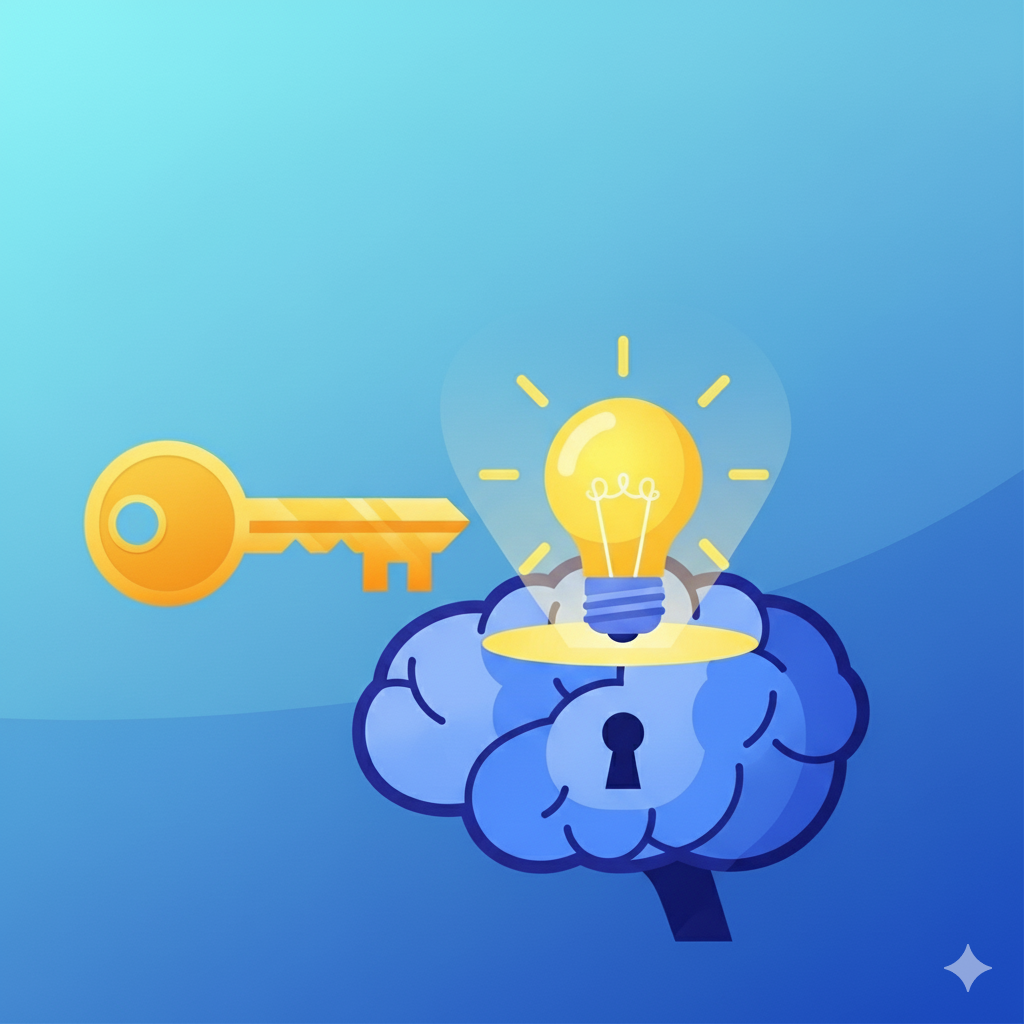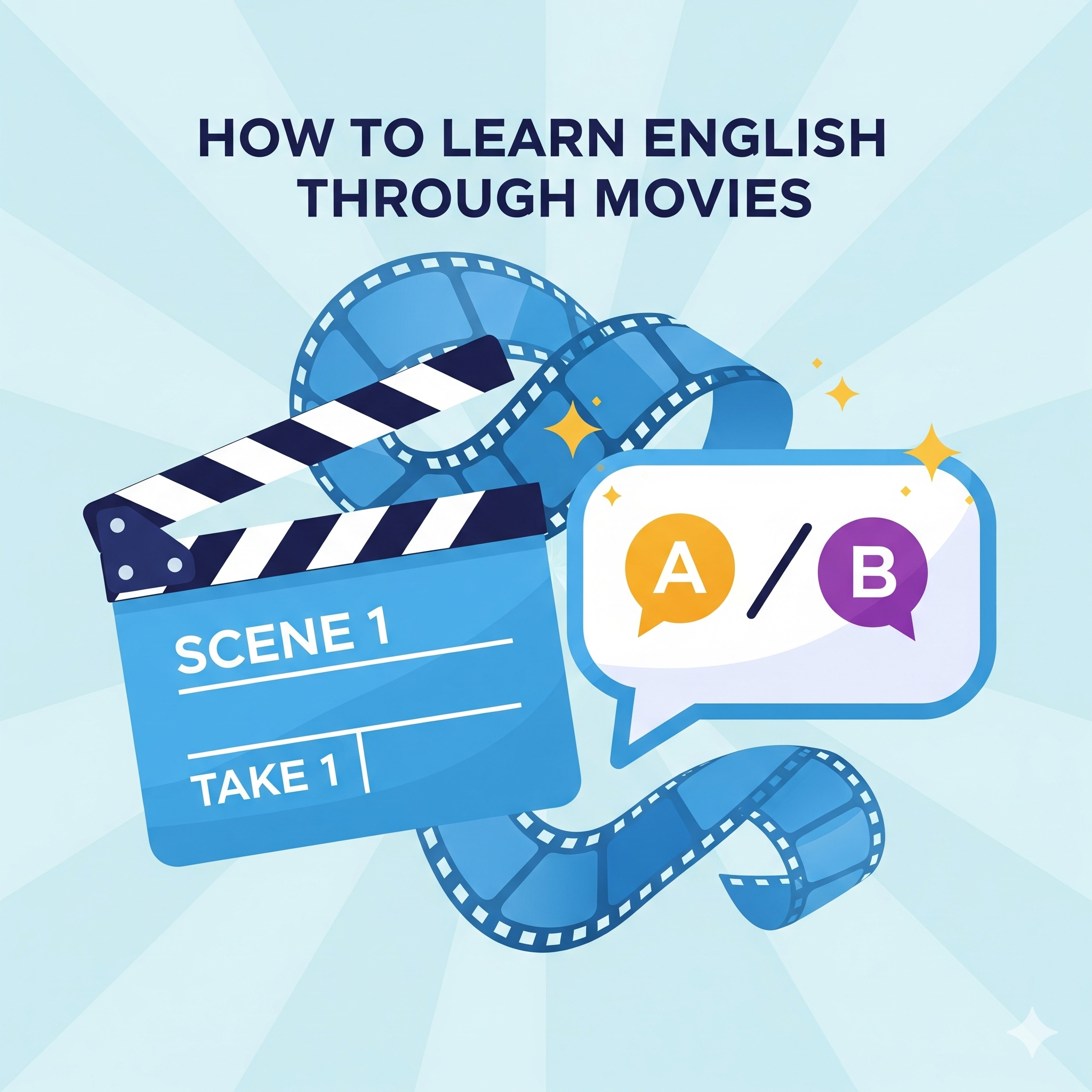
The Secret to Learning English Naturally: How Comprehensible Input Changes Everything
Discover the science-backed method that makes English learning effortless and natural. Learn how comprehensible input can transform your language journey without forcing grammar drills.

Marley Mulvin Broome
Founder and CEO of Freelight Software, passionate about making English learning accessible to everyone through AI technology.
Published September 6, 2025
8 min read
Have you ever wondered why children learn their first language so effortlessly, while adults struggle with grammar books and vocabulary lists? The answer lies in a revolutionary discovery that turned language learning on its head – and it’s called comprehensible input.
This isn’t just another learning technique. It’s the scientific breakthrough that explains why some people become fluent by watching Netflix while others spend years in traditional classrooms with minimal progress. Today, you’ll discover this “secret” and learn how to apply it to transform your English learning journey.
What Is Comprehensible Input?
Comprehensible input is language that you can understand, even when it contains some unfamiliar words or structures. It’s the sweet spot between too easy (boring) and too difficult (overwhelming). Think of it as the “Goldilocks zone” of language learning – it’s just right.
[1]The theory was developed by linguist Stephen Krashen, who observed that we acquire language naturally when we receive input that is slightly above our current level – what he called “i+1” (input plus one level). This happens unconsciously, without forced memorization or explicit grammar instruction.
Why Traditional Methods Fall Short
Before we dive deeper into comprehensible input, let’s understand why traditional language learning often feels like pushing a boulder uphill:
The Grammar-First Trap
Most English courses start with grammar rules: “Use ‘a’ before consonants, ‘an’ before vowels.” While this knowledge isn’t wrong, it’s like trying to learn to ride a bike by studying the physics of balance. Your brain becomes so focused on the rules that natural communication becomes impossible.
The Vocabulary Overwhelm
Traditional methods often throw lists of disconnected words at learners. You might memorize “ubiquitous” and “serendipity” before you can comfortably use “although” or “besides” in conversation. This creates gaps in your foundation that make real communication difficult.
The Fear of Making Mistakes
When learning is rule-based, every sentence becomes a grammar test. This creates anxiety that blocks the natural language acquisition process. You end up translating in your head instead of thinking directly in English.
How Comprehensible Input Works: The Science
[2]When you encounter comprehensible input, something magical happens in your brain. The language acquisition device – the same mechanism that helped you learn your first language – activates automatically. Here’s the process:
- Pattern Recognition: Your subconscious mind identifies recurring patterns in the language
- Hypothesis Formation: Your brain creates rules about how English works (without you realizing it)
- Testing and Refinement: Through more exposure, these unconscious rules become more accurate
- Automatic Production: Eventually, you can produce correct English without thinking about grammar rules
This process is why a child who has never studied grammar can say “I went to the store” instead of “I goed to the store” – they’ve acquired the pattern through exposure, not memorization.
The Five Key Principles of Effective Comprehensible Input
1. Compelling Content Over Perfect Comprehension
[3]The content must be interesting enough to keep you engaged. If you’re bored, your brain switches off the acquisition process. This is why watching a gripping Netflix series often produces better results than studying textbook dialogs about ordering coffee.
Practical Application: Choose content that you would enjoy in your native language. Love cooking? Watch English cooking shows. Fascinated by space? Follow NASA’s YouTube channel. Your passion fuels the learning process.
2. Slightly Above Your Current Level
The input should be challenging but not overwhelming. If you understand about 70-80% of what you’re hearing or reading, you’re in the perfect zone for acquisition.
How to Find Your Level: Start with content and gradually increase difficulty. If you’re understanding less than 60%, step back to easier material. If you’re understanding 95%+, challenge yourself with more complex content.
3. Massive Exposure
Language acquisition requires volume. You need thousands of hours of input, not hundreds. This might seem daunting, but remember – you’re consuming content you enjoy, so it doesn’t feel like studying.
Reality Check: Children receive about 17,000 hours of input before they’re considered fluent in their first language. Adults can accelerate this through focused exposure and prior language knowledge, but significant time investment is still required.
4. Low Anxiety Environment
[4]Stress blocks language acquisition. When you’re worried about making mistakes or being judged, your brain focuses on survival rather than learning. Comprehensible input works best when you feel safe to make errors and experiment.
Creating Safety: Practice with patient conversation partners, join supportive online communities, and remember that mistakes are data for your brain, not failures.
5. Natural Communication Context
Language should be encountered in meaningful contexts, not isolated exercises. This is why conversation and storytelling are so powerful – they provide rich, contextual input that mirrors real communication.
Practical Applications: Making It Work for You
Movies and TV Shows: Your Secret Weapon
Movies and TV shows are ideal sources of comprehensible input because they provide:
- Visual context that helps you understand unfamiliar words
- Emotional engagement that keeps your brain active
- Natural speech patterns that textbooks can’t replicate
- Cultural context that helps you understand not just what people say, but why they say it
For beginners, start with animated movies or shows with simpler language. For intermediate learners, try comedies or dramas. Advanced learners can tackle documentaries or complex series.
Pro Tip: Don’t use subtitles in your native language – they prevent your brain from processing the English audio. Use English subtitles only when necessary, and gradually wean yourself off them.
For perfectly leveled movie content that matches your current English level, check out MovieLevel.com, which provides movies categorized by difficulty to ensure you’re always in that optimal learning zone.
Reading for Pleasure
[2]Choose books, articles, or blogs slightly above your current level. The key is to read for enjoyment, not to understand every word. Your brain will fill in the gaps naturally over time.
Progressive Strategy:
- Beginner: Young adult novels, news articles designed for learners
- Intermediate: Popular fiction, lifestyle magazines, blog posts
- Advanced: Literary fiction, academic articles in your field of interest
Podcasts and Audio Content
Audio-only content forces your brain to process language without visual cues, strengthening your listening comprehension. Start with podcasts that have transcripts available, then gradually move to audio-only content.
Interactive Content
Engage with content creators through comments, social media, or forums. This provides natural output opportunities while maintaining the low-pressure environment crucial for acquisition.
Common Myths Debunked
Myth 1: “You Need to Understand Every Word”
Reality: Trying to understand everything actually slows down acquisition. Your brain is incredibly good at inferring meaning from context – trust the process.
Myth 2: “Grammar Study Speeds Up Learning”
Reality: Explicit grammar study might help you pass tests, but it doesn’t improve your ability to communicate naturally. In fact, it can create interference with the natural acquisition process.
Myth 3: “You Must Start Speaking Immediately”
Reality: There’s a natural “silent period” in language acquisition where your brain is building internal systems. Forcing output too early can actually slow down the process.
Myth 4: “Adults Can’t Learn Like Children”
Reality: While adults face some challenges (like stronger language filters and social anxiety), the fundamental acquisition mechanism remains active throughout life.
Overcoming Common Challenges
“I Don’t Understand Enough”
If you’re understanding less than 60% of the content, it’s too difficult. Step back to easier material. There’s no shame in starting with content designed for younger audiences or language learners.
“Progress Feels Slow”
Language acquisition happens gradually and often invisibly. You might not notice improvement day-to-day, but monthly progress checks will reveal significant growth. Keep a learning journal to track your journey.
“I Don’t Have Time for Massive Input”
Remember that comprehensible input replaces traditional study time – it doesn’t add to it. Instead of studying grammar for 30 minutes, spend that time watching an English YouTube video about a topic you love.
“I Need to Speak for Work/School”
While comprehensible input should be your primary focus, you can accelerate speaking development by:
- Shadowing (repeating after audio)
- Recording yourself reading interesting passages
- Participating in low-pressure conversation groups
Creating Your Comprehensible Input Plan
Step 1: Assess Your Current Level
Spend a week consuming various types of English content and note your comprehension levels. This gives you a baseline for choosing appropriate materials.
Step 2: Identify Your Interests
List topics, genres, and content types you enjoy in your native language. These will be your primary sources for comprehensible input.
Step 3: Set a Daily Input Goal
Aim for at least 1-2 hours of comprehensible input daily. This can be broken into smaller chunks throughout the day.
Step 4: Create a Content Library
Build a collection of:
- 3-5 YouTube channels at your level
- 2-3 podcasts or audiobook series
- Books or blog sources for reading
- Movies or TV series for weekend viewing
Step 5: Track Your Progress
Keep a simple log of what you consumed and your estimated comprehension level. Watch for patterns and adjust your content difficulty accordingly.
The Long-Term Transformation
Students who embrace comprehensible input often report surprising changes:
- Thinking in English: Instead of translating, you start thinking directly in English
- Intuitive Grammar: You know what “sounds right” without remembering rules
- Natural Vocabulary: Words appear in your speech automatically, in appropriate contexts
- Confidence: Reduced anxiety about making mistakes leads to more natural communication
- Cultural Understanding: You pick up nuances and cultural references naturally
Your Journey Starts Now
Comprehensible input isn’t just a learning technique – it’s a return to how your brain naturally acquires language. By surrounding yourself with understandable, engaging English content, you activate the same powerful learning mechanism that made you fluent in your first language.
The secret isn’t secret anymore. The question is: are you ready to trust your brain’s natural learning ability and make English acquisition feel as natural as breathing?
Start today. Find content that interests you, set aside perfectionist tendencies, and let comprehensible input work its magic. Your future fluent self will thank you.
Stay Updated with English Learning Tips
Join thousands of learners getting proven strategies, free resources, and exclusive content delivered to your inbox every two weeks.
- Stephen Krashen. "The Input Hypothesis". https://www.leonardoenglish.com/blog/comprehensible-input. Krashen's groundbreaking theory that revolutionized our understanding of language acquisition
- Sanako. "Comprehensible Input Theory". https://sanako.com/comprehensible-input-theory/. Modern explanation of how comprehensible input activates the brain's natural language acquisition device
- Teaching English. "Comprehensible Input in English Language Teaching". https://www.teachingenglish.org.uk/professional-development/teachers/knowing-subject/articles/comprehensible-input-english. Research on how engaging content improves language acquisition more than perfect understanding
- La Libre Language Learning. "Comprehensible Input and Language Acquisition". https://lalibrelanguagelearning.com/comprehensible-input/. Research on how stress and anxiety block the language acquisition process
Related Posts

How to Learn English with Movies: The Fun Way to Fluency
Master English naturally through movies with proven techniques. From subtitles to active watching strategies, discover how films can accelerate your English learning journey.

How to Build Lasting Language Learning Habits: Beat the Dip and Create Atomic Progress
Discover proven strategies from psychology and habit formation to build sustainable language learning routines. Learn to overcome setbacks and create daily habits that stick.